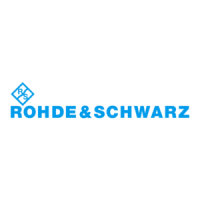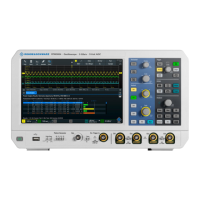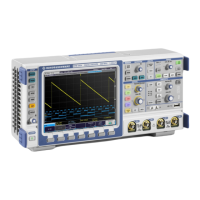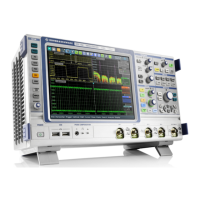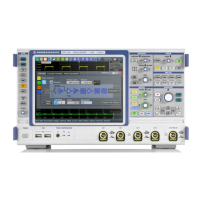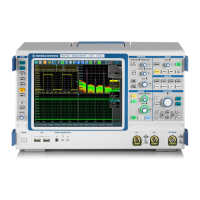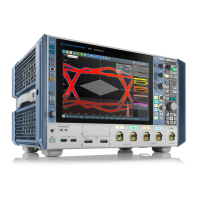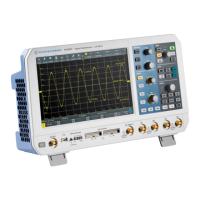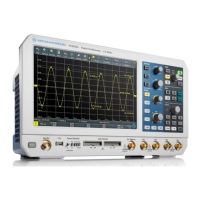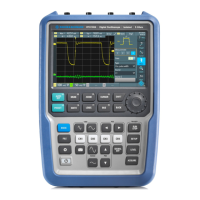Serial bus analysis
R&S
®
RTM3000
286User Manual 1335.9090.02 ─ 09
CAN data message format
The CAN protocol defines two formats for the data frame: the base frame format and
the extended frame format. The data frames are built as follows:
Figure 13-21: CAN basic frame
Figure 13-22: CAN extended frame
The following fields, compose the base/extended frame format:
●
SOF: start of frame. 1 dominant bit that marks the beginning of the message.
●
Identifier: 11/18-bit identifier. Contains information about the priority of the mes-
sage. CAN base frames have an 11-bit identifier while CAN extended frames have
a total of 29 bits identifier.
●
RTR: remote transmission request bit. Differentiates between base and extended
frames. It is dominant for base data frames and recessive for extended data
frames.
●
SRR: substitute remote request. Only present in extended CAN frames at the posi-
tion of the RTR bit in base frames.
●
IDE: identifier extension bit. It helps to distinguish between a base and extended
data frame. It is dominant for data frames and recessive for remote frames
●
r0/r1: reserved bits for possible future use.
●
DLC: data length code. Defines how many bytes of data follow.
●
Data: up to 8 bytes of data can be transmitted for CAN.
●
CRC: cyclic redundancy check. Checks the integrity of the frame contents.
●
ACK: acknowledgement. This is a recessive bit that is overwritten by the node, if
the message was transmitted correctly.
●
EOF: end-of-frame: marks the end of the message.
●
IFS: interframe space. Separates a data or remote frame from the preceding
frames.
13.5.2 CAN configuration
The correct setup of the protocol parameters and the threshold is the condition for
decoding the signal.
CAN (option R&S
RTM-K3)
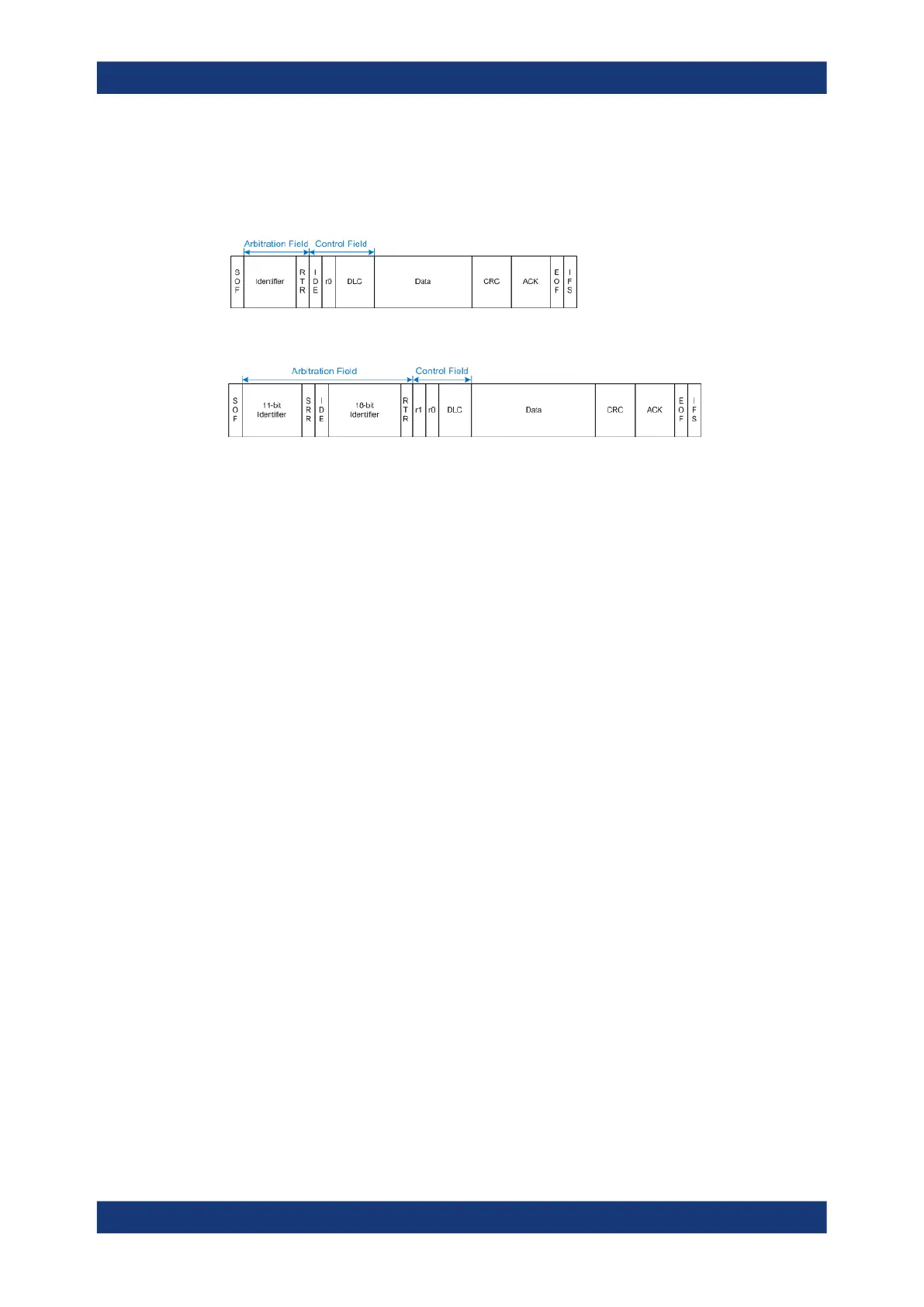